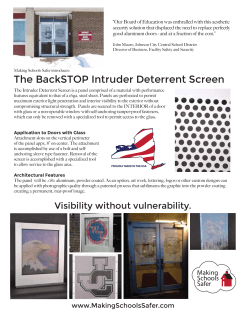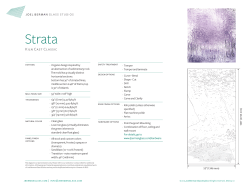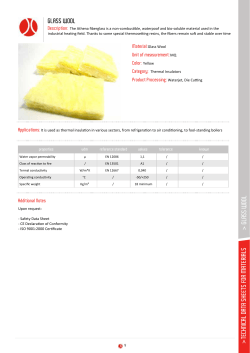
Make a Fused Pocket for Your Posies
Make a Fused Pocket for Your Posies Add a splash of color to any space with a custom fused glass vase to hold a bright spray of flowers or sprig from a favorite plant. From simple single-color bud vases to complex textured designs, the sky is the limit for techniques you can incorporate in your pocket vase project. Materials: Fusible glass or pre-cuts Fiber paper Fusible bails, jump rings or high temp wire Optional accents: Decals Enamels Millefiori, Dots, Frit Balls Stringers Pre-Cut shapes Chain or ribbon to hang your pocket vase Materials for project shown: 10” White Pre-Cut Circle #X11809 10” Clear Pre-Cut Circle #X11802 Caribbean Blue Transparent #X5321 Blue Topaz Transparent #X5322 Sky Blue Transparent Pebbles #X5331 Lagoon Dots #X94694 17 Gauge High Temp Wire #450417 Project shown by artist Lexan Cranfill Instructions: 1. Cut high temp wire and form hanging rings. Hanging rings can be a simple loop or formed into decorative shapes to accent your design. 2. Cut 2 equal size pieces of glass (or use pre-cut circles) to form your base. Clean glass and position wire hangers between layers. Delphi Tip: For round projects, positioning hangers at “10 o’clock and 2 o’clock” will help ensure your project hangs properly. 3. Determine the size of pocket you wish to create. How wide, how deep and how long would you like the pocket to be? Vases designed for daffodils and chrysanthemums may be very different in size and shape. The opening for your pocket vase is created by cutting and layering fiber paper between layers of glass. Cut 2 equal size pieces of glass to form your pocket. Your pocket can be round, square or rectangular, and can be constructed from a single color, or multiple colors as shown in the project. 4. Decorate your base glass and pocket with fusible embellishments as desired. 5. Position the base glass and pocket glass separately on a prepared kiln shelf and fire to a full fuse. 6. Trace your fused pocket glass to create a template. Cut fiber paper 3/4” – 1” smaller than the template on all but 1 side, leaving additional fiber to create the opening on the remaining side. Cut additional layers of fiber and shelf paper as needed to stack providing the depth of opening desired. 7. On a prepared kiln shelf, position fiber on base glass where you would like the pocket formed. Place the fused pocket glass layer on top of the fiber, aligning to ensure the fiber will create an opening at the top of the pocket. Fire to a medium fuse. Delphi Tip: For round projects, make certain the pocket is positioned on your base with the hanging rings and opening both facing “up”. The opening for your pocket vase is created by cutting and layering fiber paper between layers of glass. Fiber paper is available in 1/8” and 1/4”, and you can cut and layer any combination of fiber paper together to achieve the custom opening you desire. Shown here is a test strip created showing layers of 1/8” and 1/4” fiber paper layered together between single layers of glass. Delphi Tip: To get the smoothest possible opening on your pocket vase, cut 2 pieces of shelf paper such as Bullseye Thinfire or Spectrum® Glass PAPYROS® to match your fiber paper template. Position the shelf paper as the top and bottom layers in your fiber paper stack when layering between glass. The smoother surface of the shelf paper prevents glass from “grabbing” and creating an irregular edge.
© Copyright 2025









